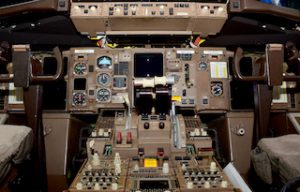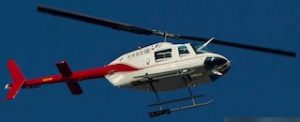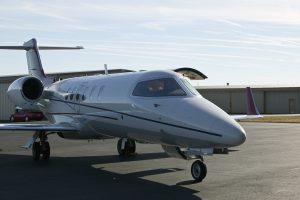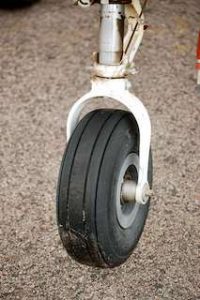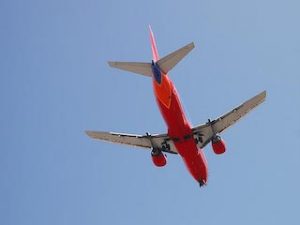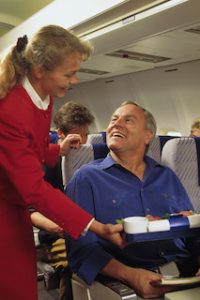9 Differences Between MCC And JOC
 Aspiring airline pilots must undergo various training courses to develop the skills and knowledge necessary for commercial aviation. Two essential courses in this journey are the Multi-Crew Cooperation (MCC) course and the Jet Orientation Course (JOC). While both are crucial, they serve distinct purposes and focus on different aspects of flight training. This article explores the main differences between the MCC and JOC courses, providing an in-depth understanding of their objectives, curricula, training methods, target audiences, durations, certifications, and career impacts.
Aspiring airline pilots must undergo various training courses to develop the skills and knowledge necessary for commercial aviation. Two essential courses in this journey are the Multi-Crew Cooperation (MCC) course and the Jet Orientation Course (JOC). While both are crucial, they serve distinct purposes and focus on different aspects of flight training. This article explores the main differences between the MCC and JOC courses, providing an in-depth understanding of their objectives, curricula, training methods, target audiences, durations, certifications, and career impacts.
MCC course
The Multi-Crew Cooperation (MCC) course is designed to teach pilots how to work effectively as part of a multi-crew cockpit environment. This course is essential for those transitioning from single-pilot operations to multi-crew settings, such as commercial airline cockpits. The MCC course emphasises Crew Resource Management (CRM), effective communication, teamwork, and decision-making within a multi-crew environment.
Components of the MCC course
-
- Crew Resource Management (CRM): Training in communication, leadership, and decision-making skills in a multi-crew cockpit.
- Teamwork and coordination: Emphasis on effective coordination and cooperation between crew members.
- Standard Operating Procedures (SOPs): Familiarisation with SOPs to ensure standardized operations within the cockpit.
- Role understanding: Clarity on the roles and responsibilities of each crew member.
- Emergency procedures: Training in handling in-flight emergencies and abnormal situations as a team.
JOC
The Jet Orientation Course (JOC) is tailored to prepare pilots for the transition from propeller-driven aircraft to jet aircraft. This course focuses on the differences in performance, systems, and handling characteristics between jets and propeller-driven planes. The JOC provides essential skills and knowledge for operating jet aircraft, emphasizing high-speed flight dynamics and advanced cockpit management.
Components of the JOC
-
- Jet aerodynamics: Principles of high-speed flight, including compressibility effects, shock waves, and transonic flight.
- Engine performance: Understanding jet engine operation, performance characteristics, and fuel management.
- Advanced flight planning: Techniques for efficient flight planning in a jet environment.
- Cockpit management: Training in the use of modern avionics and automation systems.
- Simulated flight scenarios: Practice in realistic flight scenarios, including normal operations, abnormal situations, and emergencies.
1) Differences in objectives
MCC course objectives: The primary objective of the MCC course is to prepare pilots for effective cooperation and communication in a multi-crew environment. This includes mastering CRM skills, understanding SOPs, and enhancing teamwork and coordination. The MCC course aims to ensure that pilots can work efficiently as part of a team, contributing to the safe and efficient operation of commercial flights.
JOC objectives: The main objective of the JOC is to equip pilots with the foundational skills and knowledge needed to transition from propeller-driven aircraft to jet aircraft. This includes understanding the unique handling characteristics of jets, mastering high-speed flight dynamics, and becoming proficient in advanced cockpit management. The JOC aims to prepare pilots for the complexities of jet operations, ensuring a smooth transition to flying jet aircraft.
2) Differences in curriculum
MCC course curriculum: The MCC course curriculum focuses on the human factors and teamwork aspects of multi-crew operations. Key areas of focus include:
-
- Crew Resource Management (CRM): Training in communication, leadership, and decision-making within a multi-crew cockpit.
- Teamwork and coordination: Emphasis on effective coordination and cooperation between crew members.
- Standard Operating Procedures (SOPs): Instruction on SOPs to ensure standardized operations.
- Role understanding: Clarity on the roles and responsibilities of each crew member.
- Emergency procedures: Training in handling in-flight emergencies and abnormal situations as a team.
JOC curriculum: The JOC curriculum is more focused on the technical and operational challenges of transitioning to jet aircraft. Key areas of focus include:
-
- Jet aerodynamics: Principles of high-speed flight, including compressibility effects, shock waves, and transonic flight.
- Engine performance: Understanding jet engine operation and performance characteristics.
- Advanced flight planning: Techniques for efficient flight planning in a jet environment.
- Cockpit management: Training in the use of modern avionics and automation systems.
- Simulated flight scenarios: Practice in realistic flight scenarios, including normal operations, abnormal situations, and emergencies.
3) Differences in training methods
MCC course training methods: The MCC course employs a combination of theoretical instruction and practical training, with a strong emphasis on teamwork and CRM. The theoretical component includes classroom lectures, computer-based training, and self-study materials. The practical component involves extensive use of flight simulators, allowing pilots to practice CRM techniques, SOP adherence, and emergency procedures in a realistic, controlled environment. The MCC course also includes debriefing sessions where pilots receive detailed feedback on their performance.
JOC training methods: The JOC also combines theoretical and practical training, but with a greater emphasis on hands-on practice in flight simulators. The theoretical component covers essential topics such as jet aerodynamics, engine performance, and advanced flight planning. The practical component involves extensive simulator sessions where pilots practice jet handling techniques, high-speed flight, and emergency procedures. The JOC includes debriefing sessions to provide pilots with feedback and areas for improvement.
4) Differences in target audience
MCC course target audience: The MCC course is primarily aimed at pilots who have completed their Commercial Pilot License (CPL) with Instrument Rating (IR) and are preparing to transition to multi-crew operations. It is also suitable for pilots seeking to enhance their qualifications and improve their employability with major airlines. The MCC course is particularly beneficial for pilots aiming to join regional or major airlines, where multi-crew cooperation is essential.
JOC target audience: The JOC is designed for pilots who have completed their basic flight training and are preparing to transition to jet aircraft. This includes pilots with general aviation experience, military pilots transitioning to civil aviation, and corporate or business aviation pilots moving to larger jets. The JOC is also beneficial for pilots seeking to enhance their jet handling skills and improve their confidence in operating jet aircraft.
5) Differences in course duration
MCC course duration: The MCC course is typically shorter in duration compared to the JOC, reflecting its focused curriculum on CRM and multi-crew cooperation. The exact duration of the MCC course can vary depending on the training provider and the specific program, but it generally ranges from several days to a couple of weeks. The course includes both theoretical and practical components, with a significant portion of time dedicated to CRM training, SOP adherence, and emergency procedures.
JOC duration: The JOC is generally longer in duration compared to the MCC course, focusing on the specific skills and knowledge needed for transitioning to jet aircraft. The duration of the JOC can vary, but it typically ranges from a few days to a couple of weeks. The course includes both theoretical instruction and practical simulator sessions, with a strong emphasis on hands-on practice in jet handling and high-speed flight dynamics.
6) Differences in certification and recognition
MCC course certification: Upon successful completion of the MCC course, pilots receive a certification that is recognised by airlines and regulatory authorities. The MCC certification is often viewed as a significant qualification that demonstrates a pilot’s readiness for multi-crew operations. It is a valuable credential that can enhance a pilot’s employability and career prospects.
JOC certification: The JOC also provides a certification upon successful completion, indicating that the pilot has received training in jet handling and high-speed flight dynamics. While the JOC certification is an important qualification, it is generally viewed as a foundational step in the transition to jet aircraft, rather than an advanced qualification like the APS certification. However, it is still a valuable credential that can enhance a pilot’s confidence and competence in jet operations.
7) Differences in career impact
MCC course career impact: The MCC course has a significant impact on a pilot’s career, particularly for those seeking to join regional or major airlines. The comprehensive training provided by the MCC course ensures that pilots are fully prepared for the demands of multi-crew operations, making them more attractive candidates to potential employers. The MCC certification is often a prerequisite for securing positions with reputable airlines, and it can be a deciding factor in achieving career progression.
JOC career impact: The JOC also has a positive impact on a pilot’s career, particularly for those transitioning to jet aircraft or seeking to enhance their jet handling skills. The training provided by the JOC ensures that pilots are comfortable and proficient in operating jets, improving their confidence and competence in jet operations. While the JOC certification is not as advanced as the APS certification, it is still a valuable credential that can enhance a pilot’s employability and career prospects.
8) Differences in course focus
MCC course focus: The MCC course is primarily focused on the human factors and teamwork aspects of multi-crew operations. It emphasizes the importance of effective communication, coordination, and cooperation between crew members. The course also covers CRM techniques, SOPs, and the roles and responsibilities of each crew member. The MCC course aims to ensure that pilots can work efficiently as part of a team, contributing to the safe and efficient operation of commercial flights.
JOC course focus: The JOC is more focused on the technical and operational challenges of transitioning to jet aircraft. It emphasizes the unique handling characteristics of jets, high-speed flight dynamics, and advanced cockpit management. The course also covers jet aerodynamics, engine performance, and advanced flight planning. The JOC aims to prepare pilots for the complexities of jet operations, ensuring a smooth transition to flying jet aircraft.
9) Differences in practical training
MCC course practical training: The practical training component of the MCC course involves extensive use of flight simulators, allowing pilots to practice CRM techniques, SOP adherence, and emergency procedures in a realistic, controlled environment. The simulators are typically configured to replicate multi-crew aircraft, providing pilots with a realistic experience of working in a multi-crew cockpit. The practical training also includes debriefing sessions where pilots receive detailed feedback on their performance.
JOC practical training: The practical training component of the JOC also involves extensive use of flight simulators, but with a greater emphasis on hands-on practice in jet handling and high-speed flight dynamics. The simulators are typically configured to replicate jet aircraft, providing pilots with a realistic experience of operating jets. The practical training also includes debriefing sessions to provide pilots with feedback and areas for improvement.
Understand the differences
The Multi-Crew Cooperation (MCC) course and the Jet Orientation Course (JOC) are both essential training programs for pilots seeking to advance their careers in aviation. While they share some similarities, they serve different purposes and focus on different aspects of flight training. The MCC course is primarily focused on the human factors and teamwork aspects of multi-crew operations, while the JOC is more focused on the technical and operational challenges of transitioning to jet aircraft.
Pilots should carefully consider their career goals and current qualifications when deciding which course to undertake. The MCC course is particularly beneficial for pilots seeking to join regional or major airlines, where multi-crew cooperation is essential, while the JOC is ideal for pilots transitioning to jet aircraft or seeking to enhance their jet handling skills. Both courses provide valuable training that can enhance a pilot’s confidence, competence, and career prospects, making them essential steps in the journey to becoming a successful airline pilot.

